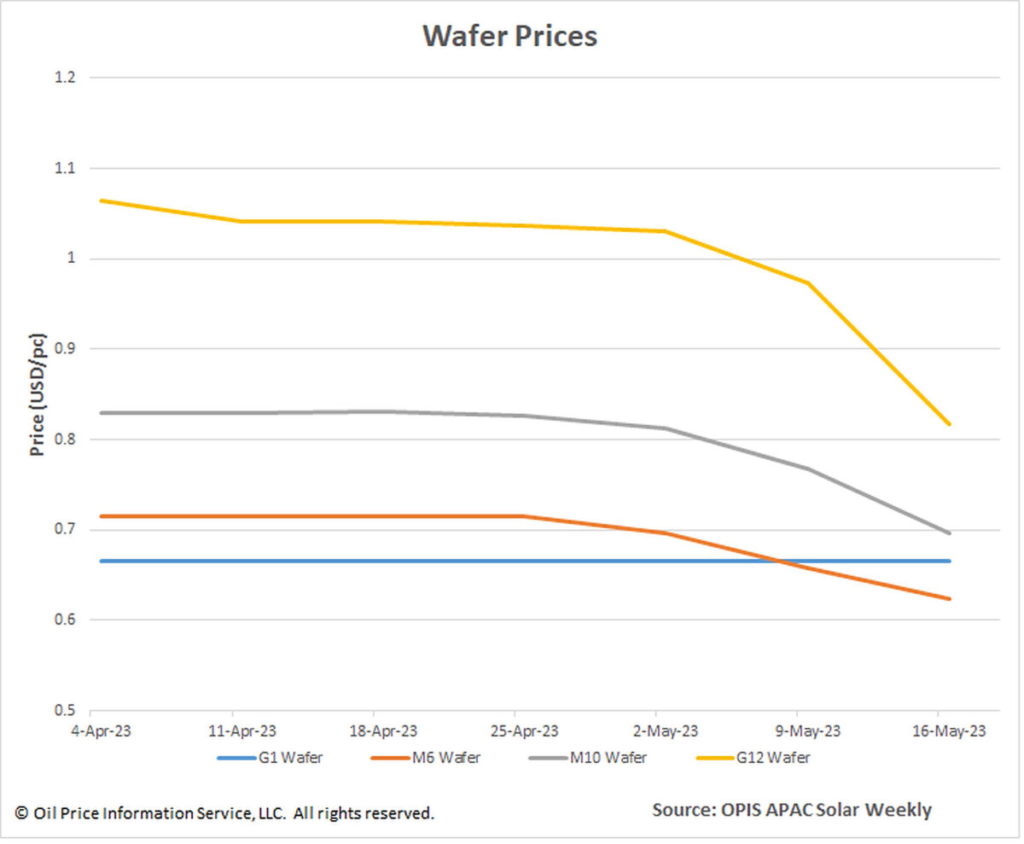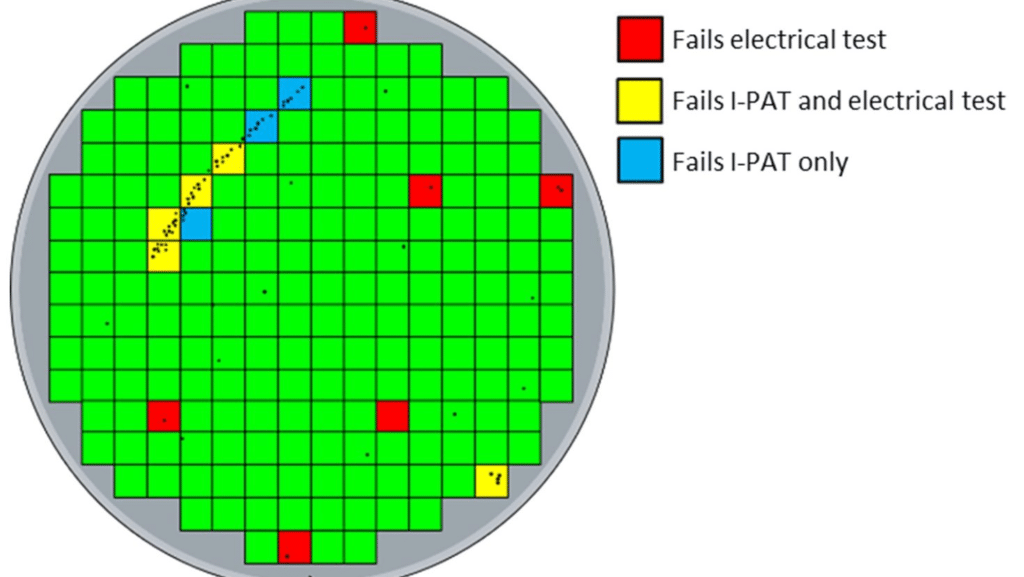Understanding and Applying Statistical Yield Limits in Semiconductor Production
Statistical Yield Limits are essential in semiconductor manufacturing. They set statistical benchmarks that help maintain product quality and assess efficiency. This strategic method optimizes manufacturing, cuts costs, and keeps companies competitive. The discussion centers on how these limits are important for the semiconductor industry’s professionals.
What are Statistical Yield Limits?
In semiconductor manufacturing, the statistical yield limit represents the highest achievable yield, considering the process’s inherent variations and defects. This concept is significant for evaluating the proportion of functional devices on a semiconductor wafer. Factors impacting this limit include:
Higher defect densities and inconsistencies in the process typically result in lower yields. Conversely, increased complexity in design and smaller device sizes raise the likelihood of critical defects.
As a theoretical maximum, the statistical yield limit helps set realistic targets for production yield and spot areas for manufacturing improvement, highlighting the efficiency and constraints of semiconductor fabrication.
Importance of Statistical Yield Limits in Semiconductor Production
Statistical Yield Limits serve as quality control, process efficiency, and cost management indicators, directly influencing a company’s market competitiveness.
By precisely defining acceptable yield ranges, SYL guides manufacturers in consistently producing high-quality semiconductors while minimizing waste and operational costs.
Role in Process Control
Statistical Yield Limits (SYL) plays a critical role in ensuring the reliability and quality of semiconductor devices. As semiconductor manufacturing isn’t a defect-free process, SYL helps reduce defect rates significantly.
SYL within SPC helps identify when a process is statistically under control and when corrective actions are needed. This is essential in semiconductor manufacturing, where even minor deviations can lead to significant product defects.
By using statistical process control (SPC) techniques, manufacturers can distinguish between normal and special variations in production, thus improving the quality and reliability of the manufacturing cycle. This quality control is essential, especially given the high volume of producing semiconductor devices, driven by the demand for IoT-based devices and other advanced technologies.
Data Analysis Techniques
In semiconductor manufacturing, effective implementation of Statistical Yield Limits (SYL) heavily relies on data analysis techniques. These methods involve using advanced statistical tools to thoroughly analyze yield data, including rates, defect densities, and their distribution across wafers.
A key component in this process is employing Murphy’s model, which calculates yield as a function of defect density and critical area [Yield=e−(D0×Acrit)]. This model helps estimate the likelihood of producing defect-free semiconductor dies. Such data-driven insights are key for predicting potential yield issues, enabling manufacturers to lift yield performance and overall product quality proactively.
Impact on Yield Optimization
Process optimization is key to maintaining efficiency and effectiveness in semiconductor production. SYL helps identify and address potential issues early in the manufacturing process. For example, by analyzing data and applying statistical techniques, manufacturers can optimize the use of machines and materials, reducing downtime and improving overall process efficiency.
Manufacturers can make informed decisions about process adjustments by closely monitoring yield and identifying trends. This ongoing process of analysis and improvement leads to higher overall yield, less waste, and more efficient use of resources.
Cost Reduction

Implementing SYL can lead to significant cost reductions in semiconductor production. By ensuring that processes are optimized and quality is maintained, manufacturers can reduce waste and minimize the production of defective products, reducing the cost per unit. Additionally, the use of predictive maintenance and advanced analytics can further optimize operational efficiency, leading to reduced operational costs.
Competitive Advantage
SYL gives manufacturers a significant edge in the highly competitive semiconductor industry. Companies can achieve higher quality and more reliable products by employing SYL, which is important in gaining and maintaining market share.
Efficiently managing and optimizing production processes can lead to faster time-to-market for new products, lifting the company’s competitive position. Advanced analytics and SPC enable manufacturers to maintain a high level of process control and quality assurance, setting them apart from competitors.
Challenges in Implementation
One of the primary challenges is ensuring the accuracy and completeness of the data used for setting these limits. Inaccurate data can lead to incorrect yield limits, which can be counterproductive. Another challenge is the dynamic nature of semiconductor manufacturing processes; as processes evolve, the SYL must be regularly reviewed and adjusted to remain effective.
Future Trends of Statistical Yield Limits in Semiconductor Production
The semiconductor industry is rapidly evolving. With it, the application and importance of Statistical Yield Limits (SYL) are also undergoing significant changes. Advancements will likely influence the future of SYL in semiconductor manufacturing in data analytics and machine learning.
These technologies have the potential to refine further the process of setting and adjusting SYL, making them more adaptive and responsive to real-time production changes. Let’s explore some key trends shaping the future of SYL in this sector.
Data Analytics and Machine Learning Integration
Advanced analytics and machine learning are becoming increasingly important in semiconductor yield improvement. These technologies enable early defect detection and root-cause identification, thus allowing for more efficient and effective problem-solving.
They also significantly reduce the time engineers spend on data analysis, freeing them up to focus on core production and design issues. Machine learning algorithms and well-organized data lakes facilitate continuous improvement by accumulating learning from past experiences.
This approach helps identify underlying patterns and convert them into actionable insights, contributing to a more accurate and dynamic SYL setting.
Sustainable Manufacturing Approaches
There is a growing emphasis on comprehensive approaches to manufacturing that consider not just the technical aspects but also sustainability. The semiconductor industry increasingly focuses on producing sustainable products that enable low-power consumption and reduce the carbon footprint.
Companies are investing in dedicated engineering teams to support these sustainability goals. This shift towards sustainable manufacturing will likely influence how SYLs are determined, focusing more on minimizing environmental impact while maintaining production efficiency.
Embracing Generative AI for Semiconductor Operations
Generative AI is set to bring transformative changes in semiconductor manufacturing. It is expected to reshape not only the design and manufacturing processes but also the operational aspects of the industry.
Generative AI-based applications and use cases for design and manufacturing support are poised to significantly alter factory automation and how the industry adapts to these technological advancements. Adopting AI technologies will likely result in more intelligent and automated methods of setting and adjusting SYLs, thus improving the process’s efficiency and accuracy.
Cross-Functional Collaboration and Process Maturity
Cross-functional collaborations and process maturity are becoming important for semiconductor companies. The focus is shifting towards building resilience in the supply chain and ensuring end-to-end transparency for better forecast prediction and demand management.
Considering the broader production and supply chain, this integrated approach can lead to a more strategic setting and management of SYLs.
Applying Statistical Yield Limits in Semiconductor Production

The application of Statistical Yield Limits (SYL) in semiconductor production is a complex process encompassing several key stages:
1. Data Collection
The first step involves collecting comprehensive and accurate data throughout semiconductor manufacturing. This data serves as the backbone for setting and adjusting SYL. It includes information on process parameters, output quality, and equipment performance. Effective data collection is critical as it forms the basis for all subsequent analyses and decisions related to yield limits.
2. Statistical Analysis
Once data is collected, it’s subjected to rigorous statistical analysis. This step defines SYL based on analyzing process variability and yield data. Engineers use statistical tools and methods to identify patterns, understand process capabilities, and set realistic yield limits.
For instance, a loss matrix can be used to map process areas and reject categories against yield performance, helping identify areas with significant yield loss. This analytical approach allows for a more nuanced understanding of process performance and aids in setting accurate and achievable SYL.
3. Monitoring and Control
The ongoing monitoring and control phase is critical in maintaining production within the set SYL. This involves continuously tracking process performance against the established yield limits and taking corrective actions when deviations occur.
Advanced analytics tools are significant in this phase, offering early defect detection and root-cause identification. These tools enable rapid response to potential issues, preventing significant yield losses.
4. Continuous Improvement
Lastly, applying SYL in semiconductor production is not a one-time activity but a continuous process. It involves regular review and adjustment of yield limits based on new data and insights, changes in production processes, or new product introductions.
The aim is to improve yield performance and continually adapt to evolving production challenges. This approach often involves going beyond traditional lean methodologies to address the real sources of waste and variability on the fab floor.
yieldWerx’s SPC Module for Statistical Yield Limits
The yieldWerxTM‘s SPC (Statistical Process Control) module is designed to improve the application of Statistical Yield Limits in semiconductor production. Below are critical aspects of how this system operates and its benefits:
SPC System Implementation
Monolithic Power Systems, Inc. (MPS) integrated the yieldWerx SPC module into the yieldWerx Enterprise setup at end-of-line sites to improve process control and product reliability. This integration, initiated in 2015, enabled monitoring of process uniformity across various units like lots, wafers, machines, and testers. This uniformity is important for maintaining consistent production quality.
Data Utilization
This module effectively handles the processing and analysis of millions of dies daily, totaling around 6-7 GB of data. It focuses on:
- Process Uniformity Metrics: These metrics ensure consistency across various production units.
- Anomaly Detection: The system alerts relevant personnel about deviations from expected process variations.
- Defect Rates: Highlights the frequency of faults occurring in production.
- Equipment Downtime: This metric tracks the duration when machinery is non-operational.
Problem Resolution and Continuous Improvement
Through the SPC module, MPS engineers receive instant notifications of irregularities in process variations. They utilize yieldWerx Enterprise software for detailed data analysis and devising action plans. This proactive approach aids in improving process control and upgrading equipment efficiency.
The system’s real-time monitoring and automatic anomaly detection capability lead to substantially improved process control. This is central to maintaining the high standards required in semiconductor manufacturing. The module’s capacity for early detection and resolution of faults is essential in ensuring higher product reliability, a critical factor in the semiconductor industry.
This SPC system is a part of yieldWerx’s broader commitment to providing flexible, end-to-end custom yield management solutions for semiconductor manufacturers.
Conclusion
In semiconductor production, the strategic application of Statistical Yield Limits is key to maintaining high standards of quality and efficiency. This approach, encompassing data collection, analysis, and continuous improvement, is important for the industry’s needs.
To integrate these practices into semiconductor manufacturing, yieldWerx provides a solution with its SPC Module, offering real-time monitoring and effective problem-solving capabilities.
Frequently Asked Questions (FAQs)
1. What are Statistical Yield Limits in semiconductor production?
They are benchmarks set in the manufacturing process to define the acceptable range of yield variability, ensuring quality and efficiency.
2. How do Statistical Yield Limits improve semiconductor production?
They help identify process deviations early, guaranteeing consistent product quality and optimizing manufacturing efficiency.
3. What is the role of data analysis in setting Statistical Yield Limits?
Data analysis is important for understanding process capabilities and variations, which aids in setting realistic and effective yield limits.
4. How often should Statistical Yield Limits be reviewed and adjusted?
Regular reviews are necessary to adapt to changes in production processes, technology advancements, and product specifications.
5. What impact do Statistical Yield Limits have on product quality in semiconductor manufacturing?
They maintain high-quality standards by minimizing variability and defects in the production process.
6. Can Statistical Yield Limits contribute to cost reduction in semiconductor production?
Yes, by reducing waste and improving process efficiency, they can lead to significant cost savings.
7. How does yieldWerx address low test yield issues?
It uses the SPC system to set statistical yield limits (SYL) and statistical bin limits (SBL) and investigates wafer map distribution to identify trends.
8. How does yieldWerx guarantee consistent quality in microcontroller manufacturing?
It automates data loading from various sources and tags them for easy analysis, providing a clear overview of all test activities.
9. How does yieldWerx manage STDF data from subcontractors?
It offers customer support for fast yield turnaround, assisting in data upload, and effective recipe control.
10. What role does technology play in managing Statistical Yield Limits in semiconductor manufacturing?
Advanced technologies, such as big data analytics and machine learning, improve the accuracy and responsiveness of yield limit setting and adjustments.
Recent Posts
- A Guide to Implementing Yield Management Software in the Semiconductor Industry
- Best Practices for Sensing Failures in Automotive ICs
- Why is Semiconductor Wafer Inspection Important?
- Multi Variant Part Average Test (MVPAT) for Refined Semiconductor Chip Manufacturing Analysis
- Wafer Map Calculators: Things You Should Know

